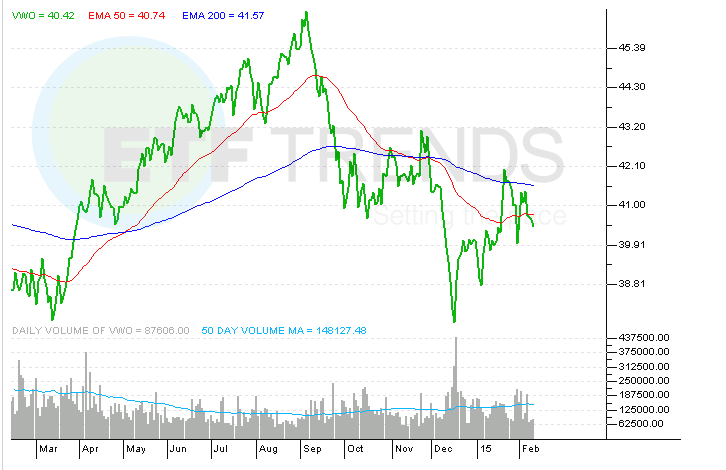Expose Yourself to Overseas Markets Choosing Between ETFs and ADRs
Post on: 1 Июнь, 2015 No Comment
These days, investors want exposure to international markets.
Luckily, the options to get exposure to foreign-based investments are about as plentiful as they have ever been. But sometimes a wide selection can lead to confusion over what the best course of action may be to realize potential huge gains in overseas markets.
For U.S. investors, two types of securities warrant consideration for international investment exposure: ETFs and ADRs.
An exchange traded fund ( ETF ) is a single security designed to track a number of component stocks that make up an index. For example, the Dow Jones Industrial Average ETF (NYSE: DIA ) tracks the Dow Jones Industrial Average (DJIA) index.
ETFs trade on a stock exchange like an individual stock. They can be traded freely throughout the day during normal trading hours. Typical trading commissions apply, just as in a stock trade, as do traditional bid/ask spreads.
ETFs are frequently compared to mutual funds, but there are some crucial differences between the two. Mutual funds trade infrequently. They also don’t trade until after the close of trading at which point the fund’s net asset value ( NAV ) is calculated to determine the price. As such, it is difficult to know just what price an investor will pay for a mutual fund . ETFs can also be sold short (unlike mutual funds) and they typically carry expense ratios well below that of comparable mutual funds.
American Depository Receipts (ADRs)
An ADR is a specific class of depositary receipt that trades specifically on U.S. exchanges. Like an ETF, an ADR trades just like a stock on a local stock market. But unlike an ETF, an ADR represents an interest in a foreign firm whose stock likely also trades on its home market’s stock exchange.
The manner in which the security is created is rather complex. If a foreign company wants to list an ADR on an American exchange, it seeks out a bank that can serve as a depository. The company deposits its shares in the bank and the bank issues certificates that then trade as ADRs.
It’s important to note that an ADR is not the same as a share of stock. In fact, an ADR can represent more than one share of company stock. The ratio is typically detailed in filing documents and is an important factor in determining per share figures for the underlying stock.
Depository receipts that trade outside the U.S. market are known as Global Depositary Receipts (GDRs) and are created in a similar fashion as ADRs. Depository receipts that trade in a specific country, like India or China, are known as Indian Depositary Receipts (IDRs) or China Depositary Receipt (CDRs), respectively.
Which is Better?

It all depends on what you’re looking for. Both ETFs and ADRs offer international exposure, and both are available to buy and sell on U.S. exchanges. But that’s where the similarities stop. Here’s a chart comparing the Powershares India ETF (NYSE: PIN ) to the ADR for India car manufacturer Tata Motors (NYSE: TTM ).
If you’re a more conservative investor looking to diversify your U.S.-centric portfolio, a broad-based ETF is probably your best bet. International ETFs allow investors to trade on macroeconomic themes and invest in certain countries or regions. And since ETFs are composed of a basket of companies, you’re exposed to less risk. Examples include the MSCI EAFE Index Fund (NYSE: EFA ). one of the more broadly defined global indexes, and the MSCI Brazil Index Fund (NYSE: EWZ ). which offers specific exposure to Brazil.
Investing in ADRs is most appealing to bottom-up investors interested in certain international companies that they wouldn’t usually be able to access. And because they’re taking on extra risk by investing in only one company instead of a diverse basket, ADR investors need to be willing to spend time doing their homework. The good news: Companies with ADRs on U.S. exchanges must file financial statements with the Securities and Exchange Commission (SEC). The even better news: All that hard work can really pay off. A winning ADR will almost always outperform the country’s ETF.
Examples of widely-followed ADRs include Brazilian beverage giant AmBev (NYSE: ABV ) and UK-based healthcare leader GlaxoSmithKline plc (NYSE: GSK ) .
Finally, if you are looking for the best of both worlds, a basket of listed depositary receipts (BLDR) is an ETF that represents a portfolio of depository receipts. Examples include the BLDRS Asia 50 ADR Index (Nasdaq: ADRA ) .














